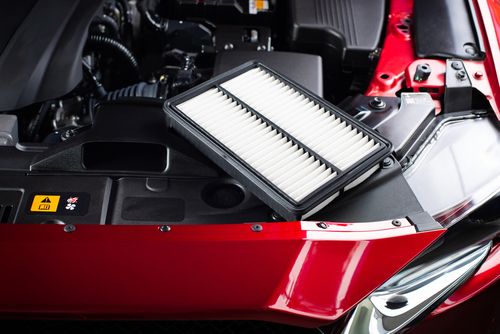When it comes to vehicle maintenance, the air filter is often overlooked. However, this small but essential component plays a critical role in your vehicle's performance, fuel efficiency, and engine health. Understanding its function and recognizing when it needs attention can prevent costly repairs and ensure your vehicle runs smoothly.
The Role of the Air Filter in Your Vehicle
Your car’s air filter is responsible for preventing dirt, debris, and contaminants from entering the engine. It ensures that only clean air mixes with fuel, which is essential for optimal combustion. Without a properly functioning air filter, particles like dust, pollen, and even small insects can enter your engine, leading to premature wear and tear. The team of technicians at Fuerst Automotive are experts in maintenance services such as air filter replacements. Don’t put off service any longer – schedule service today.
Critical Components Affected by the Air Filter
Several key vehicle components depend on a clean air filter to function efficiently:
- Engine: A clogged air filter restricts airflow, leading to poor combustion and reduced power. Without proper air intake, the engine struggles to generate efficient combustion, which can cause increased fuel consumption and even overheating in extreme cases.
- Mass Air Flow Sensor (MAF): This sensor measures the amount of air entering the engine and ensures the correct air-to-fuel ratio. A dirty filter can cause buildup on the sensor, leading to inaccurate readings, erratic idling, and poor engine performance.
- Throttle Body: The throttle body controls the amount of air entering the engine. A clogged air filter can cause dirt and debris buildup on the throttle plate, leading to sluggish acceleration and hesitation.
- Spark Plugs: If an engine receives too much fuel due to restricted airflow, the spark plugs may become fouled with excess carbon deposits. This can lead to misfiring, rough idling, and difficulty starting the vehicle.
- Fuel Efficiency: Restricted airflow forces the engine to work harder, increasing fuel consumption and reducing miles per gallon (MPG).
- Emission Control System: A dirty air filter can affect the air-to-fuel ratio, increasing harmful emissions such as carbon monoxide and hydrocarbons, which can cause the vehicle to fail an emissions test.
The Importance of Regular Air Filter Maintenance
Replacing your air filter at the recommended intervals—typically every 12,000 to 15,000 miles—can significantly improve your vehicle’s efficiency and longevity. However, if you drive in dusty or polluted environments, you may need to replace it more frequently.
Neglecting air filter maintenance can lead to:
- Reduced Engine Performance: A clogged filter limits oxygen intake, causing sluggish acceleration and reduced horsepower.
- Decreased Fuel Economy: Your engine compensates for restricted airflow by burning more fuel, leading to higher costs at the pump.
- Engine Damage: Over time, contaminants that bypass a dirty filter can cause internal engine wear, potentially leading to expensive repairs.
- Check Engine Light Activation: An overly clogged air filter can cause the engine’s sensors to detect irregularities, triggering a warning light.
Signs Your Air Filter Needs Replacing
To avoid these issues, Fuerst Automotive recommends looking out for the following warning signs that indicate your air filter may need replacing:
- Reduced Acceleration: If your vehicle feels sluggish or slow to respond, it could be due to restricted airflow.
- Decreased Fuel Efficiency: If you notice a sudden drop in gas mileage, a clogged air filter might be the culprit.
- Unusual Engine Sounds: A dirty air filter can cause popping, coughing, or sputtering noises from the engine.
- Black Smoke from Exhaust: An imbalanced air-to-fuel ratio can lead to incomplete combustion, producing dark exhaust smoke.
- Strong Fuel Smell: A rich fuel mixture from a lack of airflow may result in a noticeable gasoline odor.
Maintain a Clean Air Filter with Fuerst Automotive’s Replacements
Maintaining a clean air filter is one of the easiest and most cost-effective ways to keep your vehicle running efficiently. Allowing the experts at Fuerst Automotive regularly check and replace the air filter not only improves engine performance and fuel economy but also prevents costly repairs in the long run. If you’re unsure about the condition of your air filter, visit us today in Broadview Heights and have it inspected to keep your vehicle in top shape.
By prioritizing air filter maintenance at Fuerst Automotive, you’re investing in the longevity and efficiency of your car, truck, or SUV. Don’t wait until performance issues arise—check your air filter today and ensure your engine gets the clean air it needs to operate at its best.

